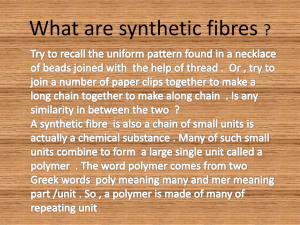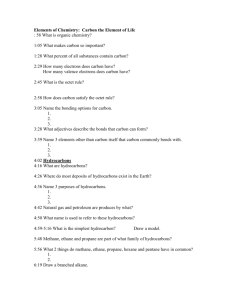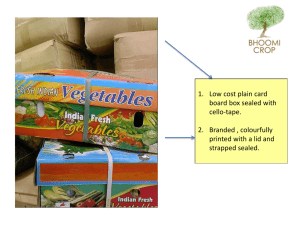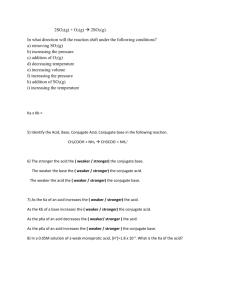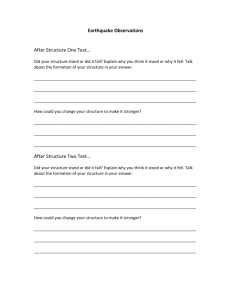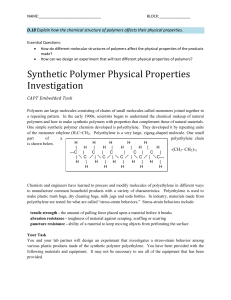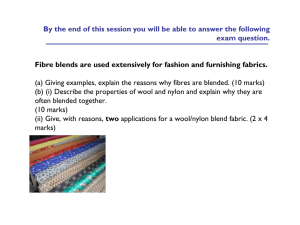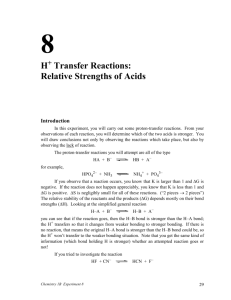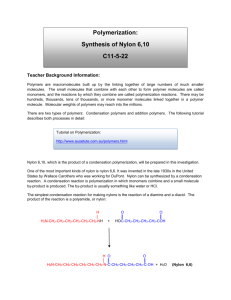What`s the difference between natural and synthetic
advertisement
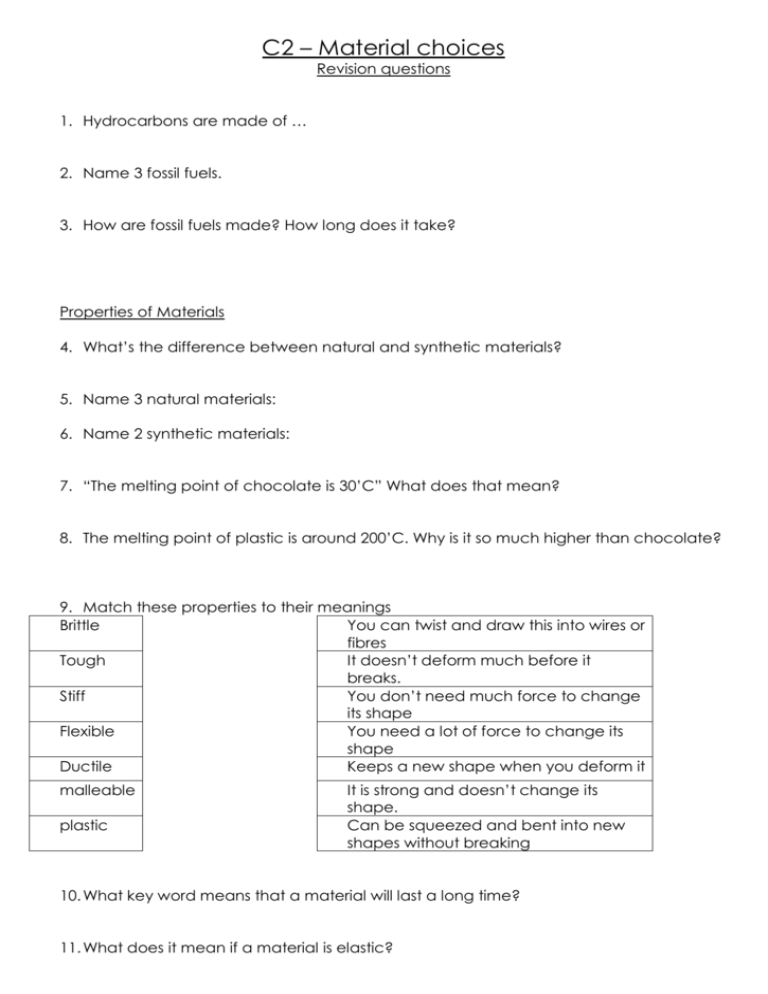
C2 – Material choices Revision questions 1. Hydrocarbons are made of … 2. Name 3 fossil fuels. 3. How are fossil fuels made? How long does it take? Properties of Materials 4. What’s the difference between natural and synthetic materials? 5. Name 3 natural materials: 6. Name 2 synthetic materials: 7. “The melting point of chocolate is 30’C” What does that mean? 8. The melting point of plastic is around 200’C. Why is it so much higher than chocolate? 9. Match these properties to their meanings Brittle You can twist and draw this into wires or fibres Tough It doesn’t deform much before it breaks. Stiff You don’t need much force to change its shape Flexible You need a lot of force to change its shape Ductile Keeps a new shape when you deform it malleable plastic It is strong and doesn’t change its shape. Can be squeezed and bent into new shapes without breaking 10. What key word means that a material will last a long time? 11. What does it mean if a material is elastic? 12. Both tension and compression can deform a material. What is the difference between these two forces? 13. Name 2 properties of rubber. 14. Fibres can be drawn into __________________ and then woven together. 15. Fibres, rubbers, plastics: Which one: Keeps its shape the best? Is most elastic? Is the most tough and long-lasting? Is most flexible? Crude Oil 16. How do we refine crude oil? By f________________ d_____________________ 17. How does the temperature change as you go up the fractionating column? 18. What are crude oil fractions used for? Give at least 3 uses. 19. Where do short hydrocarbons come out of the column? Where do long hydrocarbons? Polymers 20. What do you call it when you put monomers together? 21. Match each diagram of to its name. Then explain how that change affects the polymer. Cross-linking The bonds are weaker/stronger because Increasing the chain length The bonds are weaker/stronger because plasticisers The bonds are weaker/stronger because crystallization The bonds are weaker/stronger because 22. Here are some ways you can change polymers. How does this affect their properties? Stronger or More or less Higher or lower weaker? flexible? melting point? Increase chain length (make the chain longer) Increasing crystallinity Add plasticisers Increase cross-linking Life cycles and the environment 23. Plastic is not biodegradable. What does that mean? 24. Name 3 ways of disposing of waste like plastic: Which one is worse for the environment? Explain your answer. 25. Why are polymers made from corn ‘better’ than polymers made from oil? 26. Which of these materials is the most sustainable: plastic, wood, nylon, metal? Explain your answer. 27. Name the main steps in a Life Cycle Assessment. 28. Why do we need to do Life Cycle Assessments? Data handling 29. Some students decided to test how much different materials can stretch. Trial # How much it stretched (cm) nylon wool 1 11 6 2 15 8 3 12 5 4 14 6 30. Calculate the best estimate for each material Wool: Nylon: 31. What is the range for each material: Wool: Nylon: 32. Is there a real difference between the two materials? Yes/No How do you know? General chemistry 33. Complete the table Name Formula Oxygen Carbon dioxide Water Carbon monoxide Methane Nitrogen Draw the molecule
